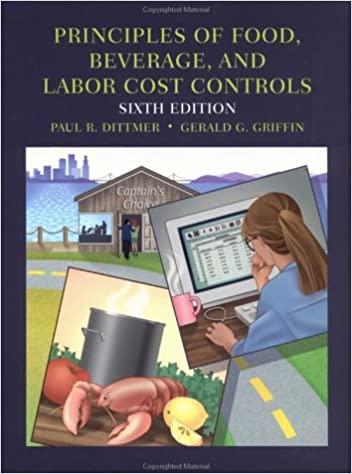Question
Measures of liquidity, The ability of a company to make its periodic interest payments and repay the face amount of debt at maturity.Solvency, and The
-
Measures of liquidity, The ability of a company to make its periodic interest payments and repay the face amount of debt at maturity.Solvency, and The ability of a firm to generate earnings.Profitability
The comparative financial statements of Marshall Inc. are as follows. The market price of Marshall common stock was $ 50 on December 31, 20Y2.
Marshall Inc. Comparative Retained Earnings Statement For the Years Ended December 31, 20Y2 and 20Y1 20Y2 20Y1 Retained earnings, January 1 $ 1,820,650 $ 1,550,750 Net income 386,400 317,600 Total $2,207,050 $ 1,868,350 Dividends: On preferred stock $ 13,300 $ 13,300 On common stock 34,400 34,400 Total dividends $ 47,700 $ 47,700 Retained earnings, December 31 $ 2,159,350 $ 1,820,650 Marshall Inc. Comparative Income Statement For the Years Ended December 31, 20Y2 and 20Y1 20Y2 20Y1 Sales $ 2,413,380 $ 2,223,550 Cost of goods sold 797,160 733,390 Gross profit $ 1,616,220 $ 1,490,160 Selling expenses $ 573,630 $ 678,110 Administrative expenses 488,650 398,260 Total operating expenses $1,062,280 $1,076,370 Income from operations $ 553,940 $ 413,790 Other revenue 29,160 26,410 $ 583,100 $ 440,200 Other expense (interest) 144,000 79,200 Income before income tax $ 439,100 $ 361,000 Income tax expense 52,700 43,400 Net income $ 386,400 $ 317,600 Marshall Inc. Comparative Balance Sheet December 31, 20Y2 and 20Y1 20Y2 20Y1 Assets Current assets Cash $ 445,750 $ 340,930 Marketable securities 674,650 564,960 Accounts receivable (net) 430,700 401,500 Inventories 321,200 248,200 Prepaid expenses 84,332 68,190 Total current assets $ 1,956,632 $ 1,623,780 Long-term investments 1,228,198 392,653 Property, plant, and equipment (net) 2,160,000 1,944,000 Total assets $ 5,344,830 $ 3,960,433 Liabilities Current liabilities $ 575,480 $ 339,783 Long-term liabilities: Mortgage note payable, 8% $ 810,000 $ 0 Bonds payable, 8% 990,000 990,000 Total long-term liabilities $ 1,800,000 $ 990,000 Total liabilities $ 2,375,480 $ 1,329,783 Stockholders' Equity Preferred $0.70 stock, $20 par $ 380,000 $ 380,000 Common stock, $10 par 430,000 430,000 Retained earnings 2,159,350 1,820,650 Total stockholders' equity $ 2,969,350 $ 2,630,650 Total liabilities and stockholders' equity $ 5,344,830 $ 3,960,433 Required:
Determine the following measures for 20Y2, rounding to one decimal place, except for dollar amounts, which should be rounded to the nearest cent. Use the rounded answer of the requirement for subsequent requirement, if required. Assume 365 days a year.
1. The excess of the current assets of a business over its current liabilities.Working capital $ 2. A financial ratio that is computed by dividing current assets by current liabilities.Current ratio 3. A financial ratio that measures the ability to pay current liabilities with quick assets (cash, temporary investments, accounts receivable), computed as quick assets divided by current liabilities.Quick ratio 4. The relationship between sales and accounts receivable, computed by dividing the sales by the average net accounts receivable; measures how frequently during the year the accounts receivable are being converted to cash.Accounts receivable turnover 5. The relationship between sales and accounts receivable, computed by dividing the average accounts receivable by the average daily sales.Number of days' sales in receivables days 6. The relationship between the volume of goods sold and inventory, computed by dividing the cost of goods sold by the average inventory.Inventory turnover 7. The relationship between the volume of sales and inventory, computed by dividing average inventory by the average daily cost of goods sold.Number of days' sales in inventory days 8. A solvency ratio that measures how much fixed assets a company has to support its long-term debt.Ratio of fixed assets to long-term liabilities 9. A comprehensive leverage ratio that measures the relationship of the claims of creditors to stockholders' equity, calculated as total liabilities divided by total stockholders' equity.Ratio of liabilities to stockholders' equity 10. A ratio that measures the risk that interest payments will not be made if earnings decrease, calculated as income before income tax and interest expense divided by interest expense.Times interest earned 11. Ratio that measures how effectively a business uses its assets to generate revenues, computed as sales divided by average total assets.Asset turnover 12. A measure of the profitability of assets, without regard to the equity of creditors and stockholders in the assets.Return on total assets % 13. A measure of profitability computed by dividing net income by average total stockholders equity.Return on stockholders equity % 14. A measure of profitability computed by dividing net income, reduced by preferred dividend requirements, by average common stockholders' equity.Return on common stockholders equity % 15. The profitability ratio of net income available to common shareholders to the number of common shares outstanding.Earnings per share on common stock $ 16. The ratio of the market price per share of common stock, at a specific date, to the annual earnings per share.Price-earnings ratio 17. Measures the extent to which earnings are being distributed to common shareholders.Dividends per share of common stock $ 18. A ratio, computed by dividing the annual dividends paid per share of common stock by the market price per share at a specific date, that indicates the rate of return to stockholders in terms of cash dividend distributions.Dividend yield % Feedback
Loading item
There was an error loading this item. If this continues to occur, please contact Technical Support.
Check My Work
- Previous
- Next
- 100% Correct
- Partially Correct
- Incorrect
- Needs Instructor Grading
Basic Calculatorclose
0
UseEntBSBSpCEHomCEnd
789+
456-
123*
0.=
Step by Step Solution
There are 3 Steps involved in it
Step: 1

Get Instant Access to Expert-Tailored Solutions
See step-by-step solutions with expert insights and AI powered tools for academic success
Step: 2

Step: 3

Ace Your Homework with AI
Get the answers you need in no time with our AI-driven, step-by-step assistance
Get Started


